
Top 10 Text To Music AI Tools
You couldn’t even dream of making music in minutes a few years ago, but now it’s possible and easy. Text to music AI tools turn written text...
No-code AI tools represent a groundbreaking shift in the technology landscape, redefining how Artificial Intelligence is accessed and utilized[1]. These tools, characterized by user-friendly interfaces and simplified workflows, eliminate the need for complex coding, thus democratizing AI[2][3].
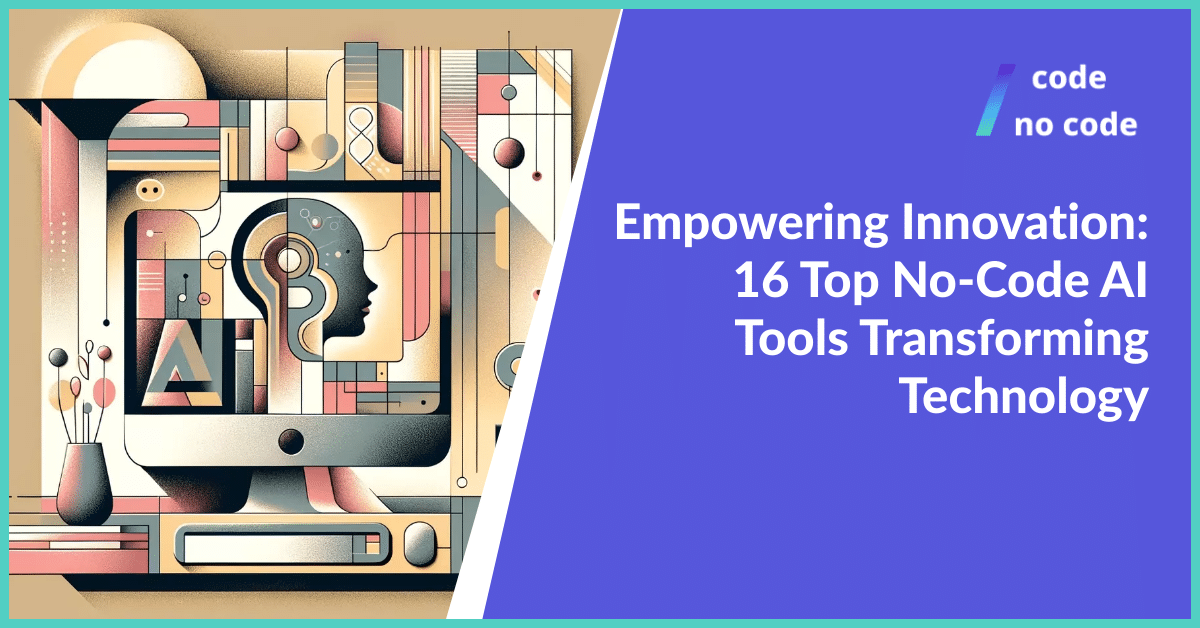
The growing importance of these tools in the tech industry is undeniable. They are not just trends but are becoming essential components in business strategies, driving efficiency, and fostering a culture of innovation.
In this article, we will delve into 16 top no-code AI tools that are reshaping technology[4]. Each tool offers unique capabilities, from automating data analysis to enhancing customer interactions, illustrating the diverse applications and impact of no-code AI in the digital world.
Zoho AI plays a pivotal role in business automation, enhancing efficiency across various industries. Integrated seamlessly with Zoho’s comprehensive suite of business applications, it brings smart, AI-driven solutions to everyday business processes.
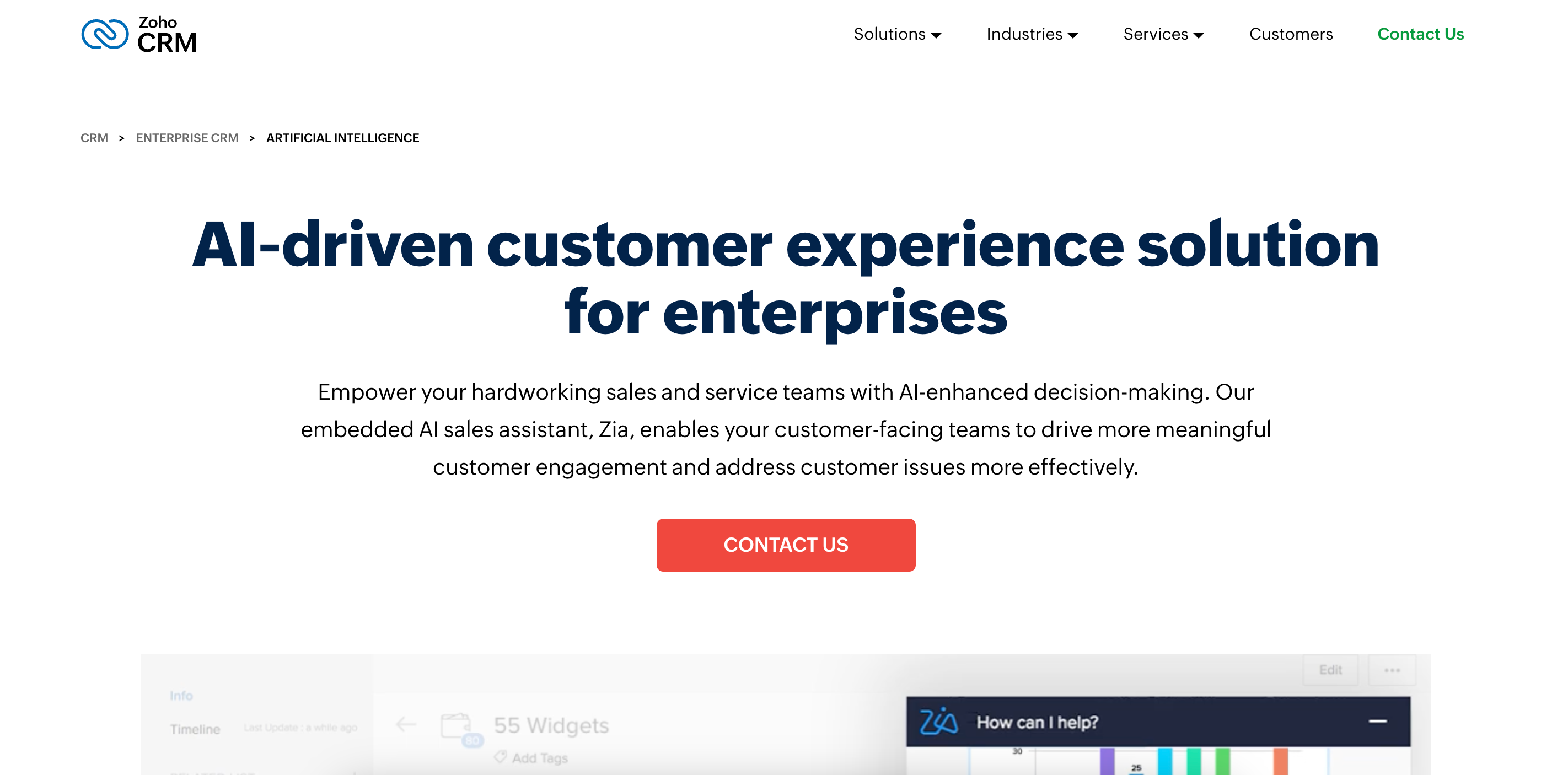
Zoho AI, a pivotal component of the Zoho ecosystem, plays a crucial role in automating and streamlining business processes. Embedded within Zoho’s comprehensive suite of applications, it leverages artificial intelligence to enhance functionalities across CRM, sales, marketing, customer service, and more. Its user-friendly interface simplifies complex AI technologies, making them accessible to a wide range of users, regardless of their technical expertise.
One of Zoho AI’s notable features is its seamless integration across the Zoho platform, enabling businesses to automate tasks, analyze data patterns, and generate actionable insights efficiently. This integration results in improved decision-making, increased productivity, and enhanced customer experiences.
A case study illustrating Zoho AI’s impact involves a retail company that utilized Zoho AI for customer data analysis and targeted marketing. The result was a significant increase in customer engagement and sales. User feedback often highlights the ease of use and the transformative effect of Zoho AI on daily business operations, positioning it as a key tool for businesses seeking to harness the power of AI without complex implementations.
Snorkel AI stands out in the realm of machine learning (ML) with its innovative approach to data labeling and weak supervision. Traditionally, ML model training requires large datasets with high-quality labels, which is time-consuming and resource-intensive.
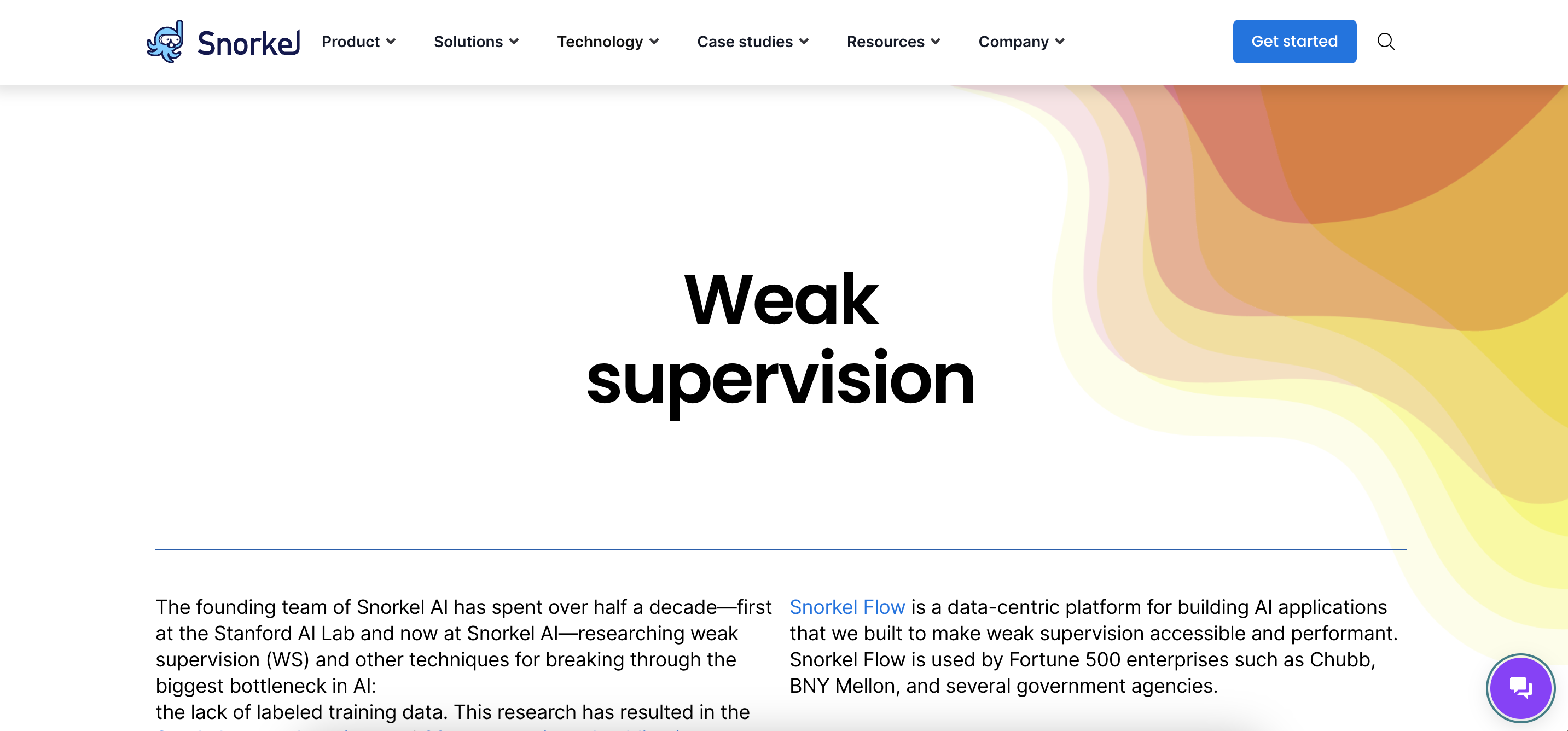
Snorkel AI addresses this by using weak supervision – a method where the model is trained on data labeled through algorithms and heuristic rules, significantly speeding up the process.
This approach not only accelerates data preparation but also enhances model accuracy by allowing for rapid iteration and tuning. By reducing the reliance on extensive hand-labeled datasets, Snorkel AI makes ML more accessible and scalable, especially for businesses with limited resources.
A notable application is in the healthcare sector, where Snorkel AI has been used to quickly label and categorize patient data, aiding in efficient patient management and treatment analysis. This demonstrates Snorkel AI’s capability to transform data-intensive tasks into more manageable processes, thereby streamlining operations and decision-making in business contexts.
Chat GPT, developed by OpenAI, showcases cutting-edge conversational AI capabilities, revolutionizing interactions in customer service and content creation. This advanced tool can understand and generate human-like text, enabling it to conduct conversations, answer queries, and provide information with remarkable accuracy.
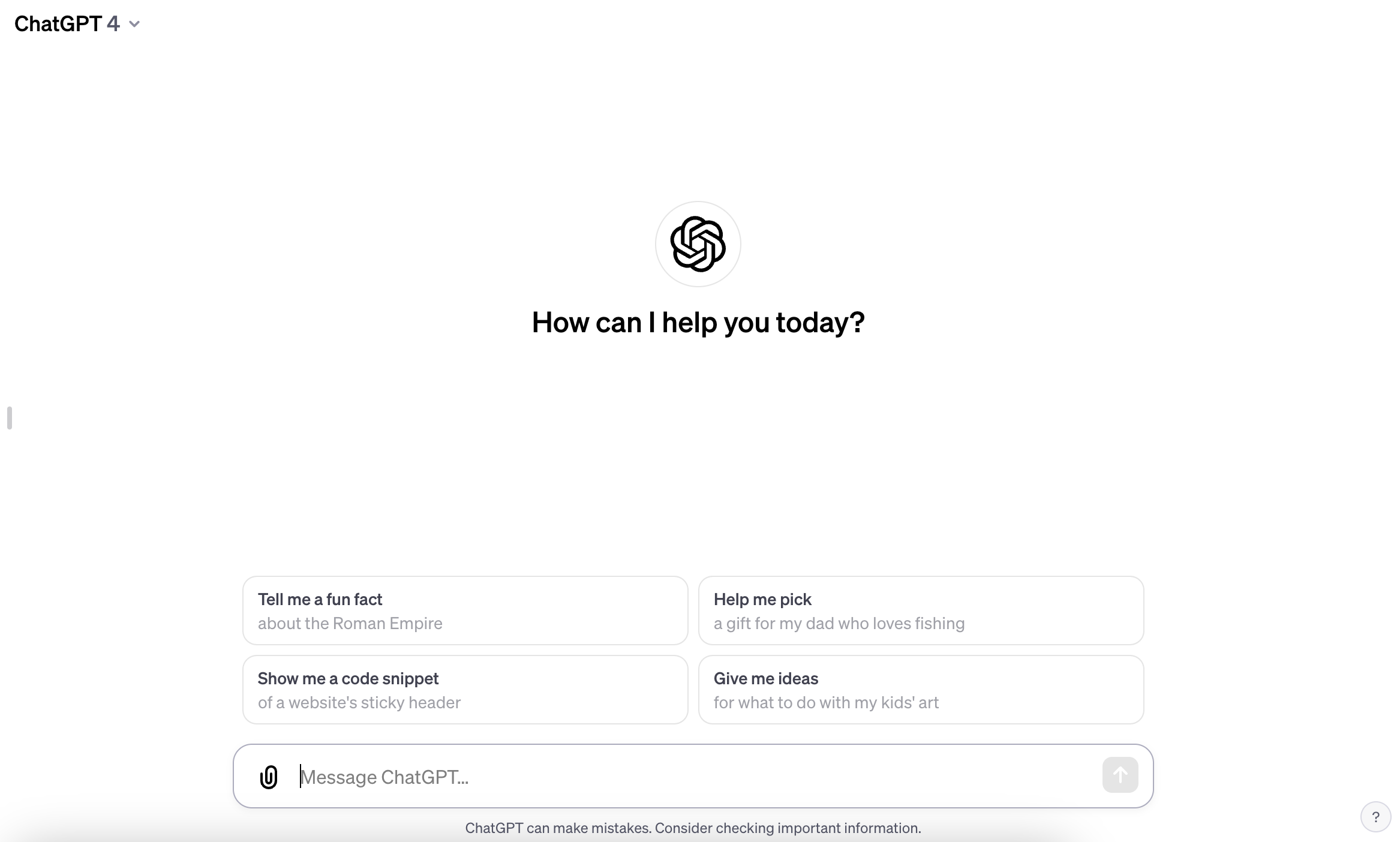
In customer service, Chat GPT assists in automating responses, enhancing customer experience with its instant and intelligent replies, significantly reducing wait times and workload on humans.
For content creation, it’s an invaluable tool, adept at drafting articles, scripts, and even creative writing, streamlining the content development process. Users commend Chat GPT for its fluency and versatility, noting its ability to swiftly generate coherent and contextually relevant content.
A notable example includes its integration in a customer support chatbot, which led to a marked improvement in customer satisfaction scores. User reviews often highlight its ease of use and the significant impact it has on reducing manual efforts in content generation and customer interaction tasks.
Compose AI revolutionizes writing and composition tasks, especially in the realms of email and business communication, through its AI-driven tools. This innovative platform employs advanced machine learning algorithms to understand context and assist users in quickly crafting clear, concise, and effective emails.
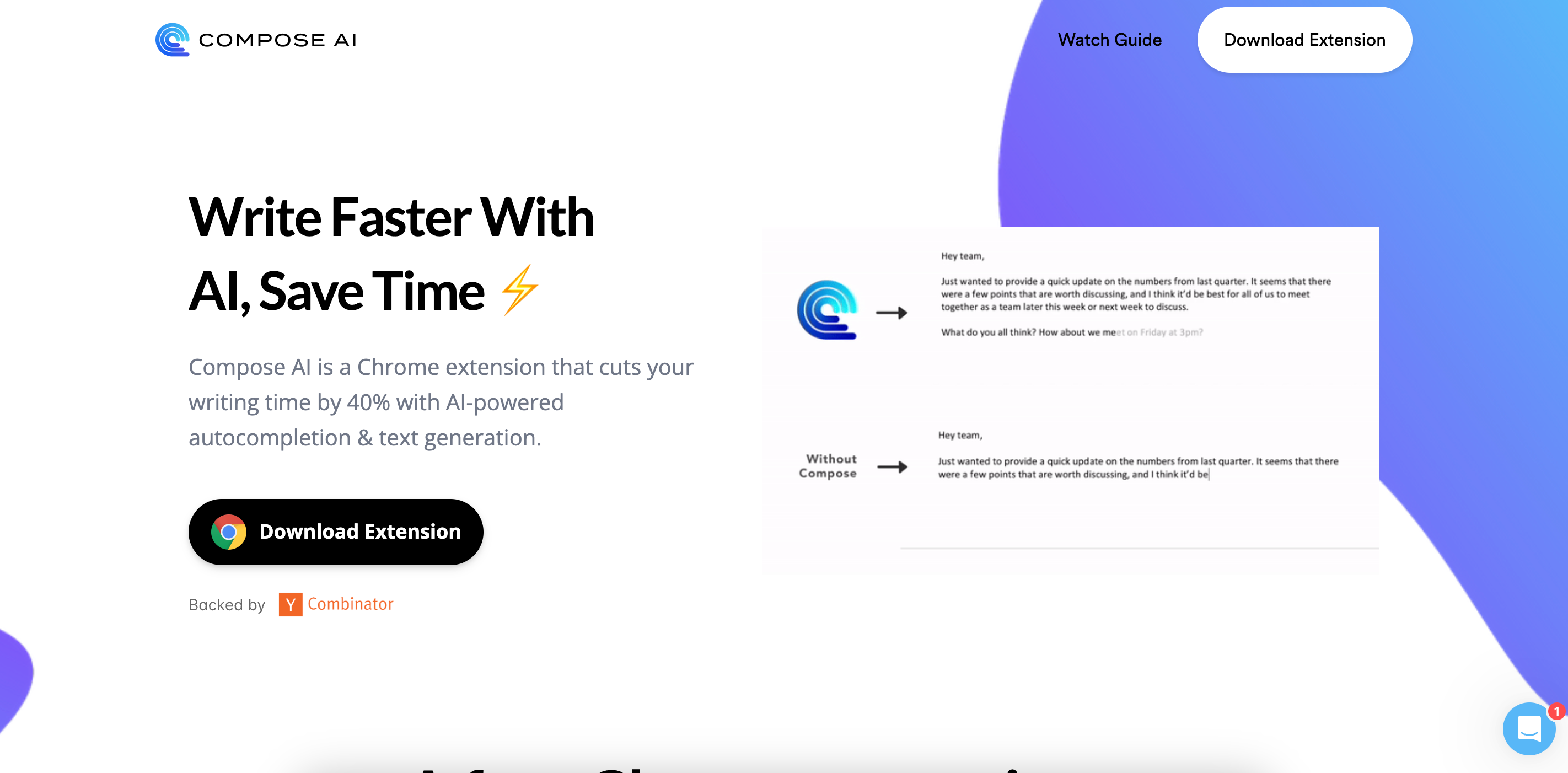
It’s particularly adept at automating repetitive aspects of writing, such as responses to common queries, enabling users to save significant time and effort.
A standout feature of Compose AI is its ability to adapt to individual writing styles, ensuring that the output remains personal and authentic. This adaptability makes it an invaluable asset for professionals who handle high volumes of email correspondence daily.
User feedback consistently praises Compose AI for its accuracy, ease of use, and the substantial increase in productivity it facilitates. One case study highlights a marketing firm that reduced its email drafting time by 50% using Compose AI, illustrating the tool’s impact on operational efficiency.
DataRobot’s enterprise AI platform represents a paradigm shift in machine learning model development, offering a streamlined, automated approach that caters to both seasoned data scientists and business analysts.
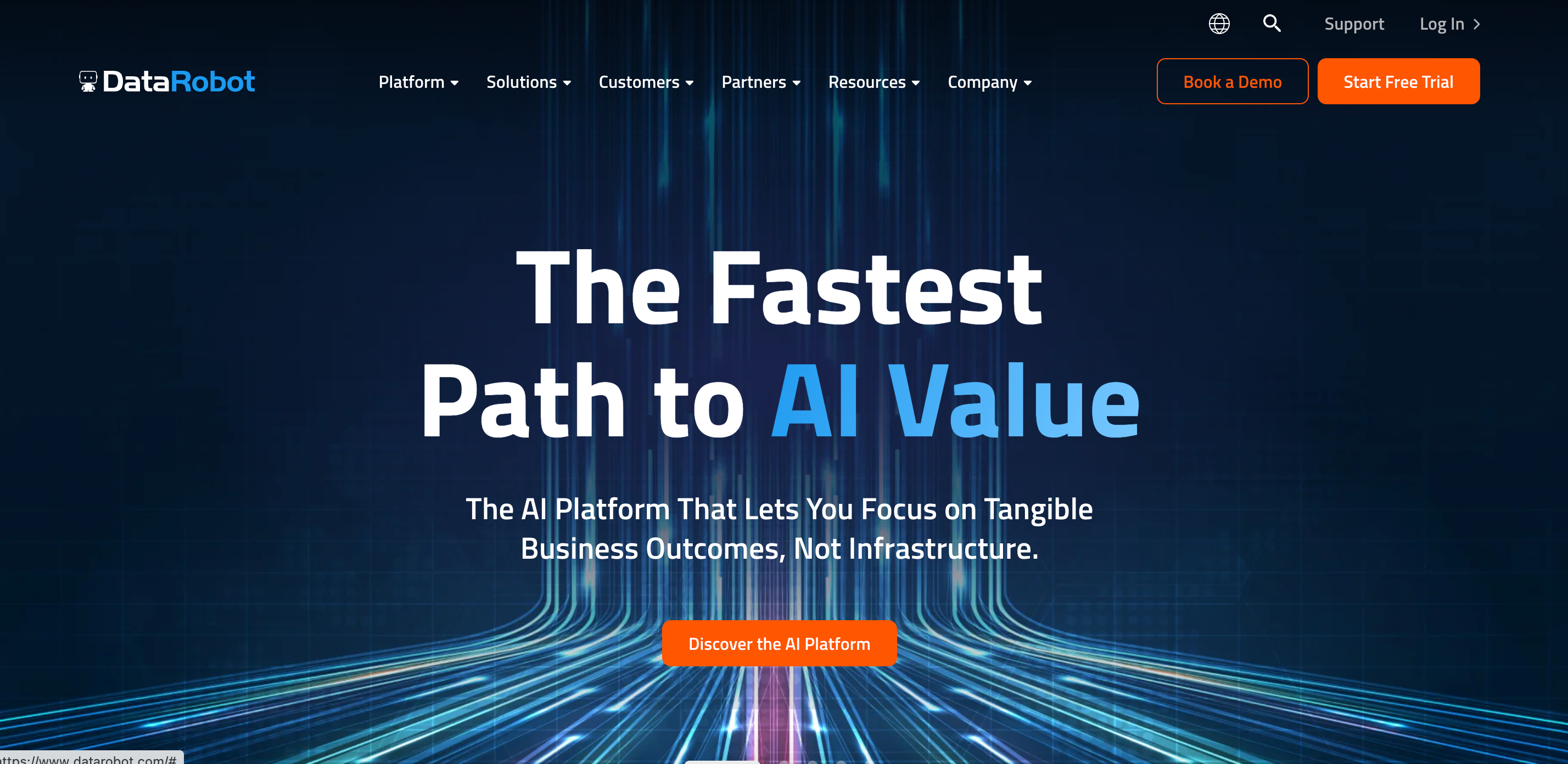
Its platform simplifies the entire lifecycle of AI model creation, from data preprocessing to deployment, using advanced algorithms that automatically select the best models and parameters. This automation not only accelerates the model development process but also ensures optimal accuracy and efficiency.
Key features of DataRobot include automated model selection, rapid prototyping, and easy integration with existing data infrastructures. Clients across various industries, from finance to healthcare, praise DataRobot for significantly enhancing their predictive analytics capabilities.
A notable example is a retail company that used DataRobot to improve its demand forecasting models, resulting in a marked increase in inventory efficiency and sales. Such testimonials underscore DataRobot’s impact in empowering businesses with AI-driven insights, making sophisticated data science accessible and actionable.
Obviously AI stands out for empowering non-technical analysts with its user-friendly tools, designed to simplify predictive modeling and data analysis. This no-code platform enables users to swiftly create and deploy predictive models using their existing datasets without needing any background in data science or machine learning.

The process is straightforward: users upload data, select a target variable, and the platform automatically builds a predictive model. These platform’s capabilities are robust, handling various types of data and providing insights for decision-making.
Businesses across sectors have leveraged Obviously AI to forecast sales, understand customer behavior, and optimize operations. Users laud Obviously AI for its intuitive interface and the quick, actionable insights it delivers.
A notable success story involves a marketing agency that used Obviously AI to analyze customer data, resulting in a 30% increase in campaign effectiveness. Such examples demonstrate the tangible impact Obviously AI has on enhancing business strategies and operational efficiencies.
Google Teachable Machine is an innovative, user-friendly tool that makes ML model training more accessible. Designed for ease of use, it allows anyone, regardless of their technical expertise, to create custom ML models.
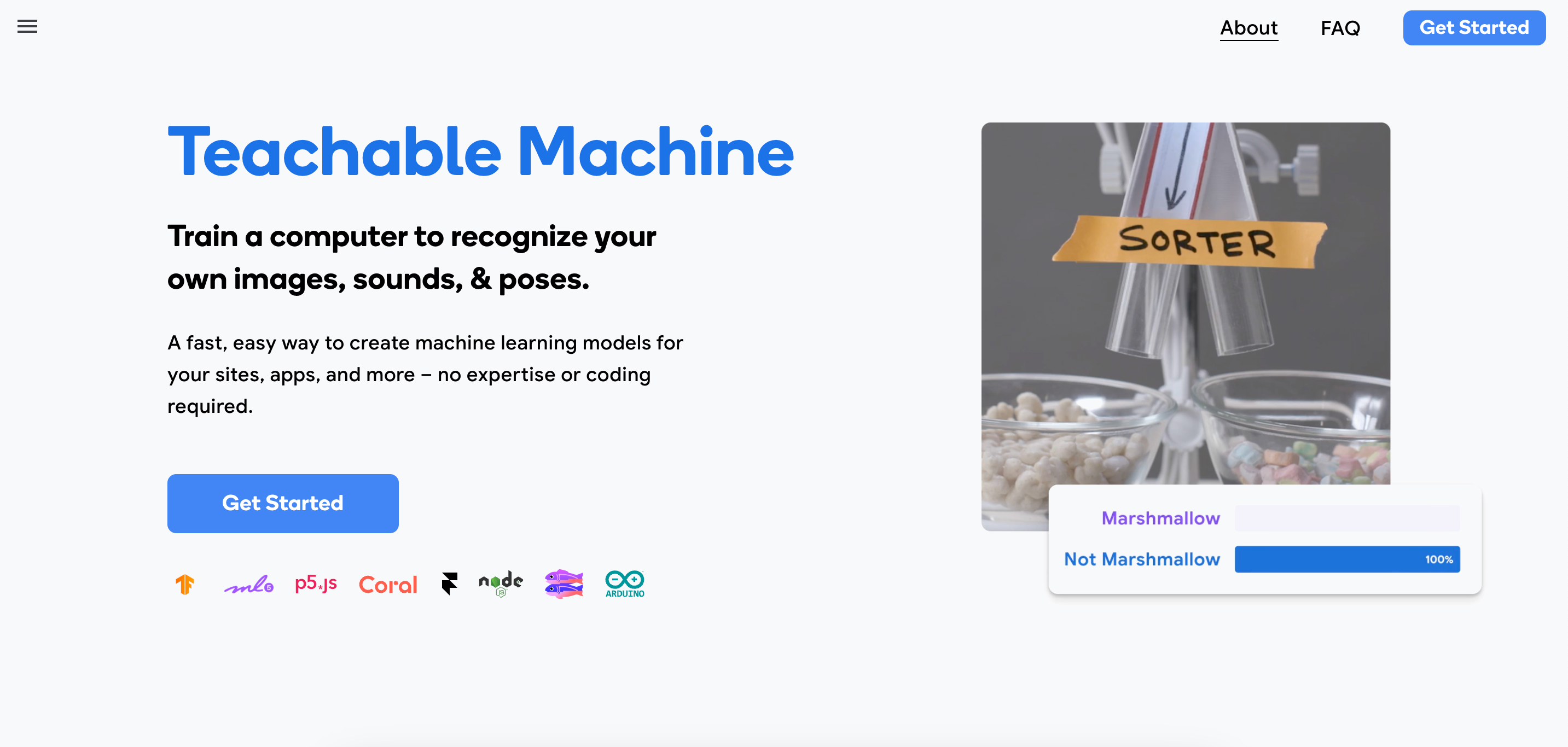
This web-based tool is particularly impactful in education and creative industries, where it enables students and professionals to experiment with and understand the fundamentals of ML in an interactive and engaging way.
In education, Teachable Machine is used to teach concepts of AI and ML, making these complex subjects more accessible and hands-on. Creative professionals use it for projects like interactive art installations and innovative design prototypes, harnessing its ability to recognize patterns and inputs from images, sounds, and physical gestures.
One notable project is an interactive educational game developed by a school where students trained models to recognize specific environmental actions. Such applications highlight Google Teachable Machine’s versatility and its role in fostering creativity and learning through practical AI experiences.
Bubble’s platform revolutionizes AI-powered web app development by enabling users to build sophisticated applications without coding. Its intuitive drag-and-drop interface allows for rapid prototyping and deployment, significantly reducing development time and costs.
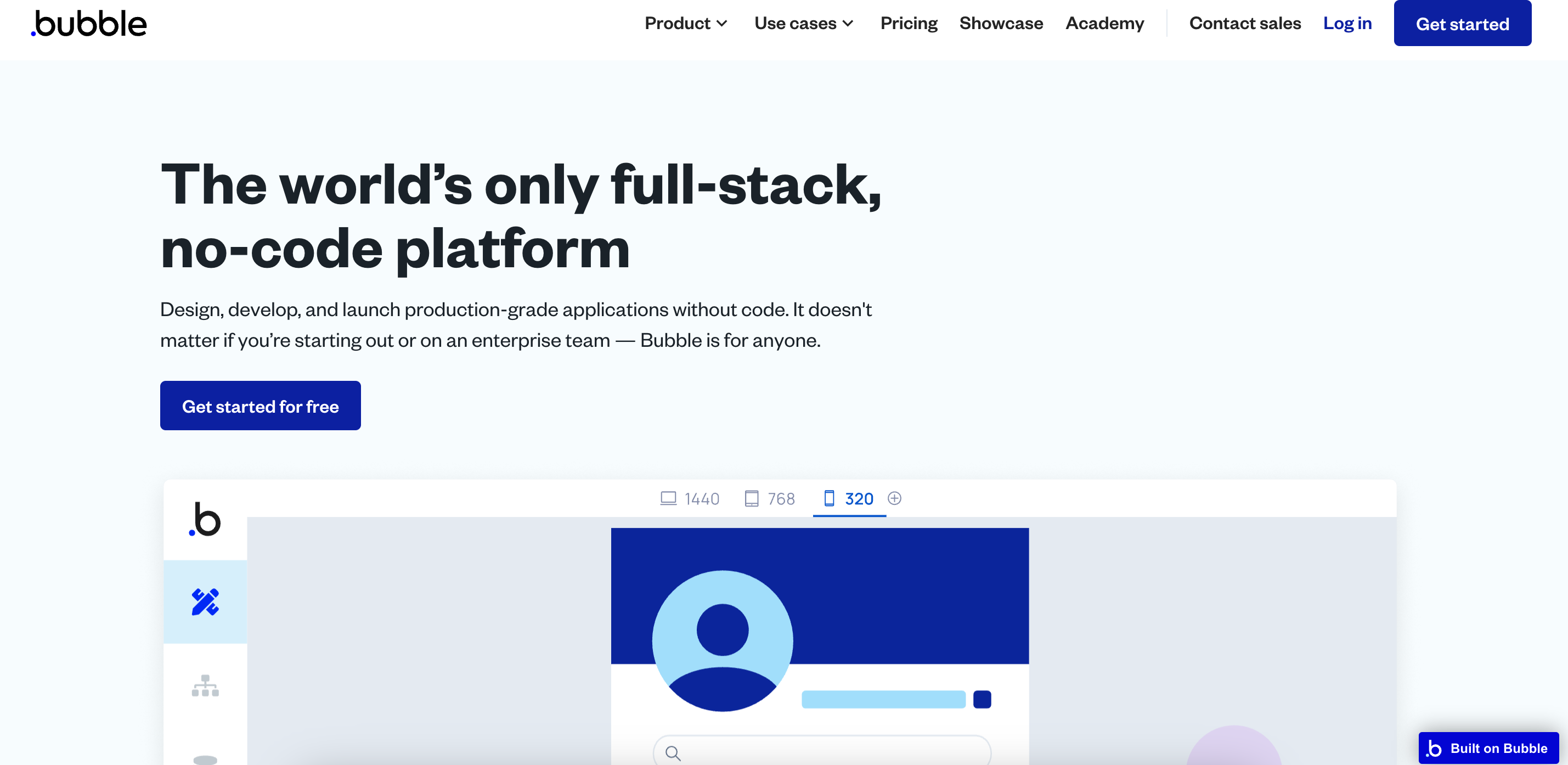
Bubble’s integrations with various AI and ML services and plugins allow users to incorporate AI-driven features into their web apps, such as natural language processing, image recognition, predictive analytics, and automated decision-making.
One of Bubble’s standout benefits is its accessibility to non-technical users, allowing entrepreneurs, small business owners, and creatives to bring their digital visions to life without the need for extensive programming knowledge. Users praise Bubble for its flexibility and the control it offers over the app development process.
Case studies reflect Bubble’s impact across various sectors. For instance, a startup was able to launch a fully-functional marketplace platform within weeks, a task that typically requires months of development. Such success stories underscore Bubble’s effectiveness in making web app development more accessible and enabling rapid digital innovation.
Akkio’s no-code machine learning platform is a game-changer, especially for sales, marketing, and finance sectors, by making AI accessible to those without a background in data science. This innovative platform allows users to quickly build and deploy AI models for predictive analytics without the traditional complexities associated with machine learning.
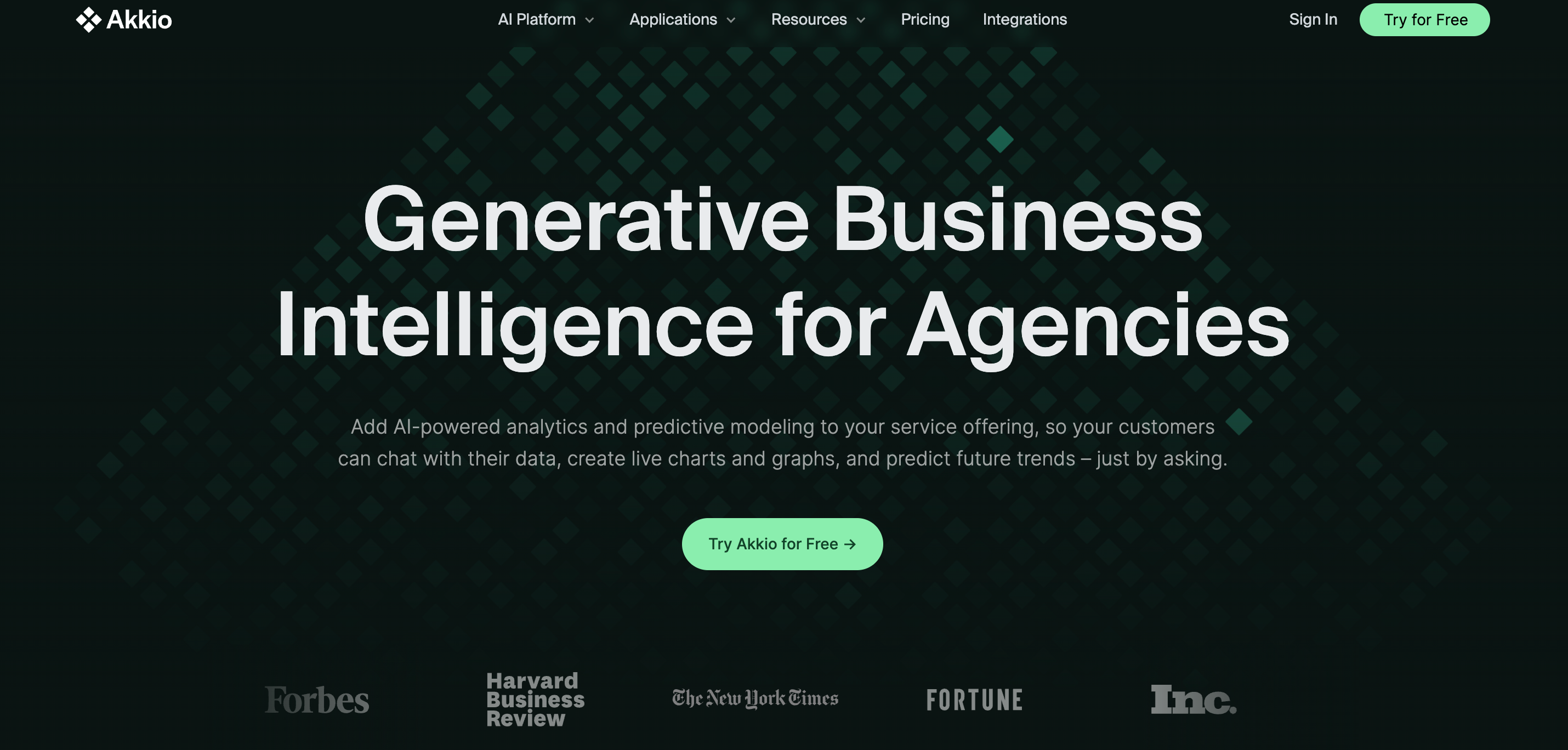
In sales and marketing, Akkio helps businesses forecast trends, personalize customer experiences, and optimize campaign strategies. Finance teams use it for risk assessment, fraud detection, and financial forecasting, leveraging AI for more accurate and data-driven decisions.
The platform’s user-friendly interface allows non-technical users to easily integrate AI into their workflows. With simple drag-and-drop functionality and intuitive model training processes, Akkio demystifies AI, making it a practical tool for business enhancement.
Clients praise Akkio for its ability to rapidly deliver insights and its transformative impact on operational efficiency, stressing its role in democratizing AI for business applications.
Google AutoML stands out in custom machine learning (ML) model development for its exceptional features and ease of use, especially for developers with limited ML expertise. This platform, part of Google Cloud, simplifies the creation and deployment of machine learning models, offering an intuitive interface and automated processes.
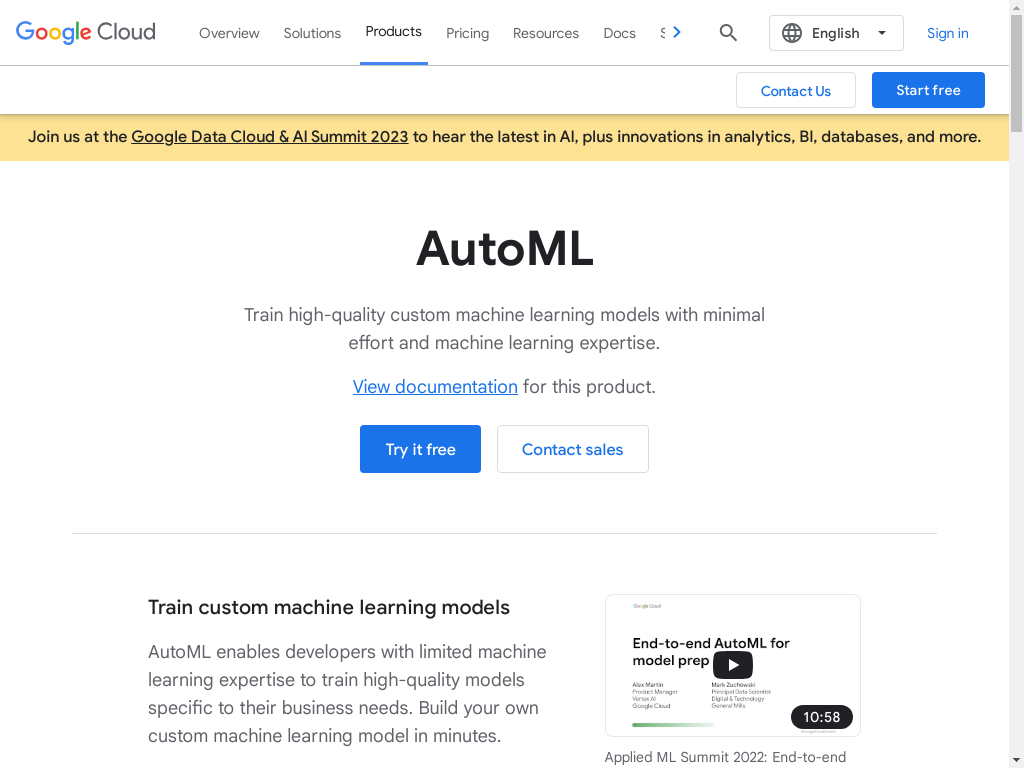
AutoML covers a wide range of ML applications, including vision, language, and structured data, enabling developers to build models tailored to their specific business needs.
One of its key features is the ability to train high-quality models with minimal effort, utilizing Google’s state-of-the-art transfer learning and neural architecture search technology. This not only accelerates the development process but also ensures the models are efficient and accurate.
A notable use case of Google AutoML is in the healthcare sector, where it has been used to develop models that accurately predict patient outcomes, significantly aiding in treatment planning and research. This example highlights AutoML’s potential to make advanced ML accessible and beneficial in critical, real-world applications.
Amazon SageMaker, a fully managed service within the AWS ecosystem, revolutionizes the way ML models are created, trained, and deployed. Its functionalities cater to both novice and experienced developers, simplifying every step of the ML process.
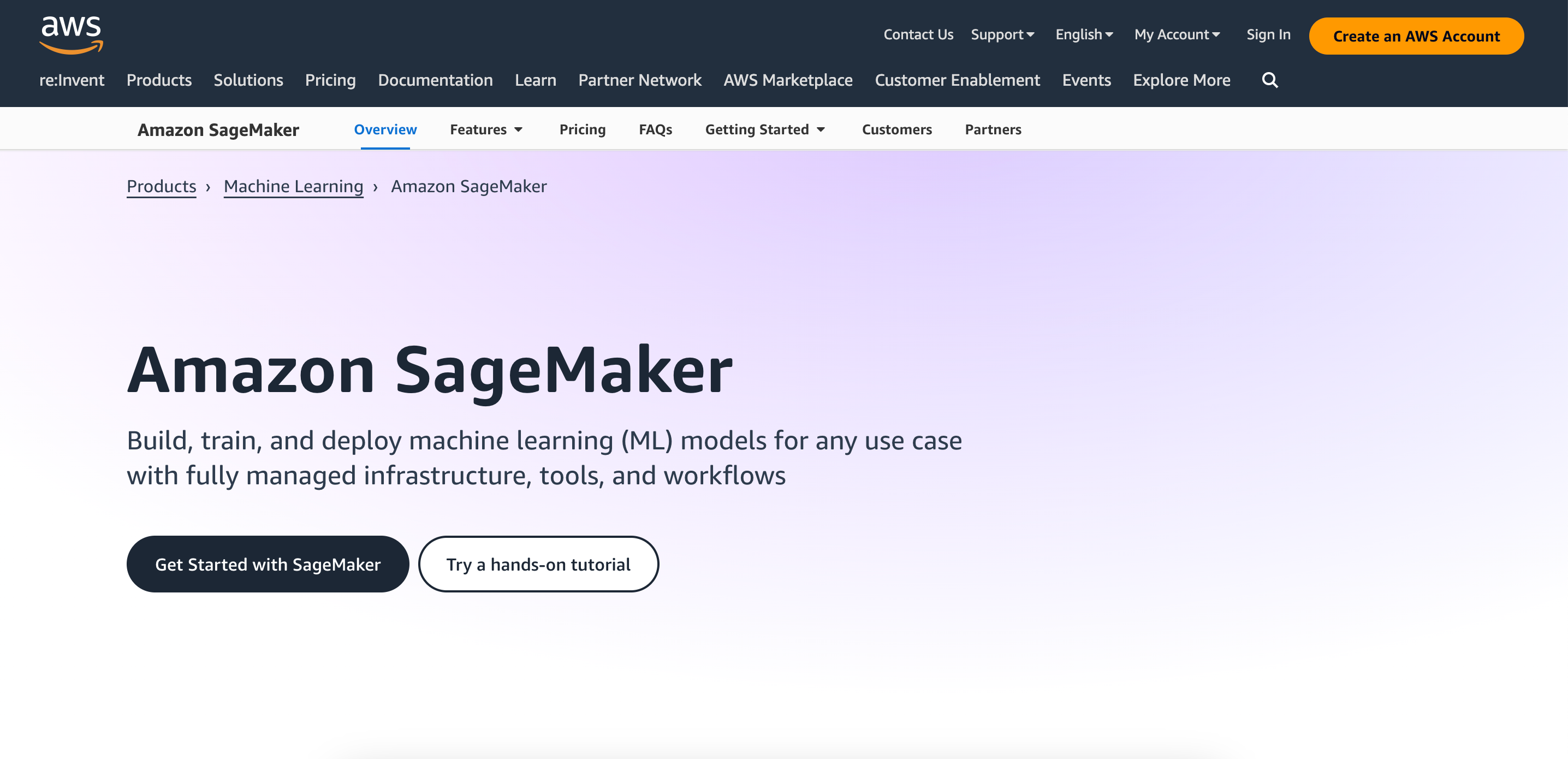
SageMaker provides a broad set of tools for building, training, and deploying models at scale, integrating seamlessly with AWS services for enhanced performance and security.
Key features include a user-friendly interface for model building, one-click training and tuning, and easy deployment to production environments. This integration with AWS ensures access to a vast array of computational resources and data storage options, making it highly adaptable for various ML applications.
Real-world applications of SageMaker span multiple industries. For instance, a financial services company used it to develop advanced fraud detection models, significantly reducing false positives. Another example is a healthcare provider leveraging SageMaker to predict patient health outcomes, improving treatment strategies. These cases demonstrate SageMaker’s capability to empower businesses with robust ML solutions, driving innovation and efficiency.
Jester, in the no-code AI landscape, is a bit less known but offers unique features that cater to specific applications. Its primary focus is on leveraging AI for personalized content recommendation, aiming to enhance user experiences on digital platforms.

Jester’s algorithm adapts to user preferences over time, delivering more tailored content suggestions, making it ideal for media streaming services, e-commerce, and content-driven websites.
What sets Jester apart is its intuitive user interface, which allows for easy integration and management without needing extensive AI knowledge. This capability enables businesses, especially those in the entertainment and retail sectors, to significantly improve customer engagement and satisfaction.
User feedback highlights Jester’s effectiveness in increasing content relevance and boosting user retention rates. An innovative use case is its deployment on a streaming service, where it successfully drove higher viewer engagement by accurately predicting and recommending shows based on individual viewing patterns. This example illustrates Jester’s potential for elevating the user experience through no-code AI.
Clarifai, a leader in the AI space, specializes in computer vision and deep learning. Its platform excels at analyzing, understanding, and categorizing images and videos with remarkable accuracy and speed.

Utilizing advanced deep learning techniques, Clarifai can recognize objects, faces, and scenes in visual data, making it a valuable tool for a variety of industries, including security, marketing, and e-commerce.
One of Clarifai’s standout features is its ability to train custom models, allowing businesses to tailor the AI to their specific needs. This capability has a wide range of applications, from automating product tagging in retail to enhancing surveillance systems for safety.
Case studies demonstrate Clarifai’s profound impact. For instance, an e-commerce company used it to automate product categorization, leading to a significant reduction in manual workload and an improved customer search experience.
Another example is its use in security systems for public spaces, where it successfully identified potential threats, enhancing safety and operational efficiency. These instances highlight Clarifai’s transformative role in leveraging AI for practical and impactful solutions.
Metatext, though lesser-known in the broad AI landscape, offers specialized functionalities in text analysis and metadata management. Its platform is designed to streamline the processing and understanding of large volumes of textual data.

Key features of Metatext include advanced natural language processing (NLP) capabilities, which enable efficient categorization, sentiment analysis, and keyword extraction from various text sources.
A unique selling point of Metatext is its ability to handle complex and diverse datasets, making it ideal for businesses dealing with extensive documents or digital content. It simplifies the extraction of valuable insights from text, aiding in decision-making and strategy development.
Client testimonials highlight Metatext’s effectiveness in enhancing data organization and knowledge discovery. For example, a digital marketing firm used Metatext to analyze customer feedback across platforms, gaining actionable insights that improved their communication strategies.
This practical application underscores Metatext’s value in providing powerful text analysis tools that aid businesses in navigating and leveraging their textual data efficiently.
MonkeyLearn’s sentiment analysis tool is a powerful asset in the realm of social listening, offering businesses critical insights into customer opinions and market trends.
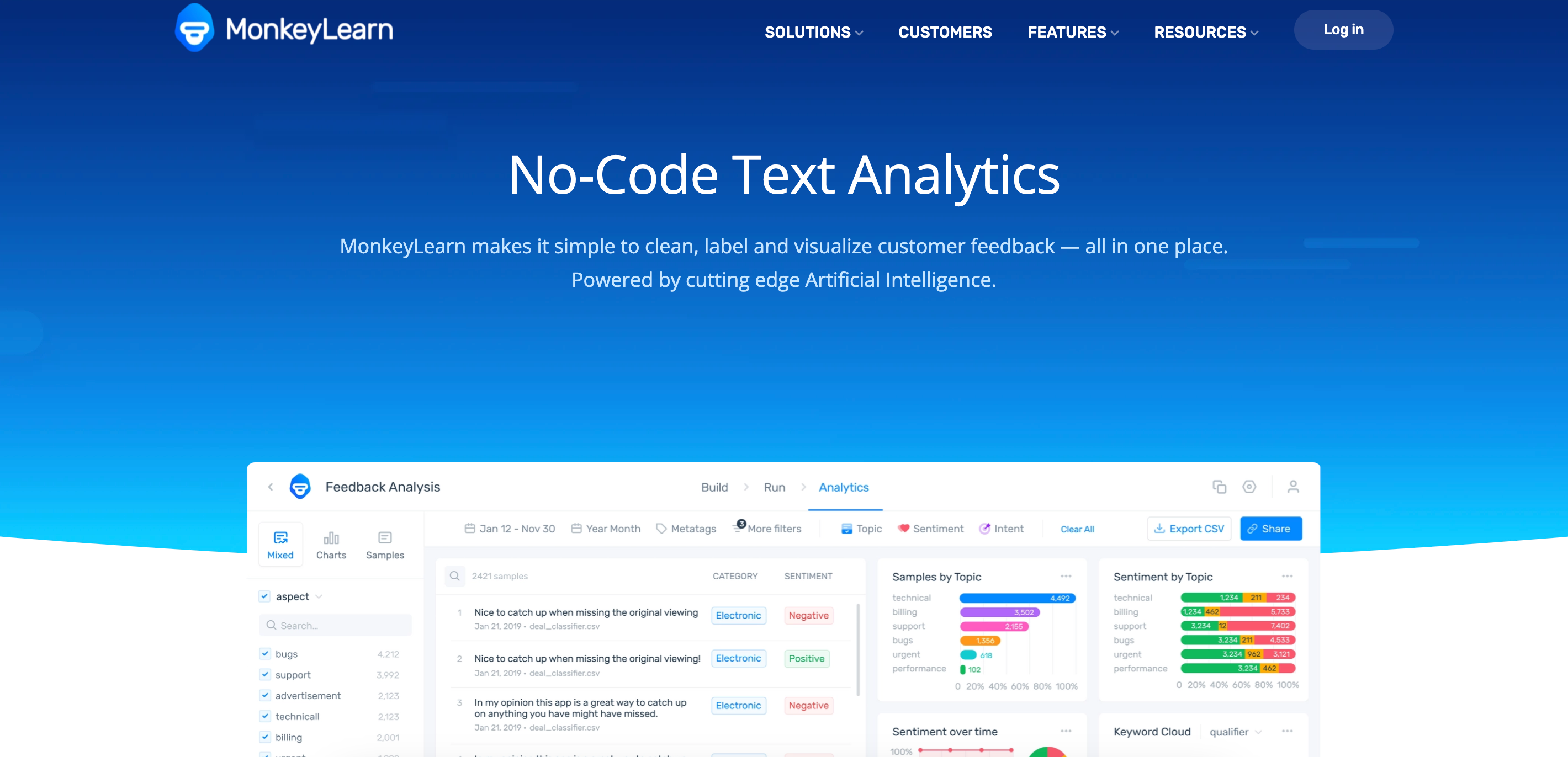
Utilizing advanced machine learning algorithms, this tool efficiently analyzes text data from social media, reviews, and customer feedback, categorizing sentiments as positive, negative, or neutral. This automated process enables companies to gauge public perception and emotional responses to their brand, products, or services in real time.
A standout feature of MonkeyLearn’s tool is its ability to process vast amounts of data quickly, providing real-time analytics that are essential for timely decision-making. Its application spans various industries, from retail to hospitality, helping businesses understand customer needs, monitor brand reputation, and stay ahead of market trends.
Clients praise MonkeyLearn for its accuracy in sentiment analysis and the actionable insights it provides. For instance, a retail company leveraged it to track customer satisfaction levels post-launch of a new product line, leading to strategic adjustments based on customer feedback.
This demonstrates MonkeyLearn’s effectiveness in transforming social media chatter into valuable business intelligence.
Notion, primarily known as a versatile productivity tool, subtly integrates AI elements to enhance user productivity and organization. It streamlines task management, note-taking, and project collaboration through an intuitive interface, complemented by AI-driven features like smart sorting, content categorization, and automated templates.
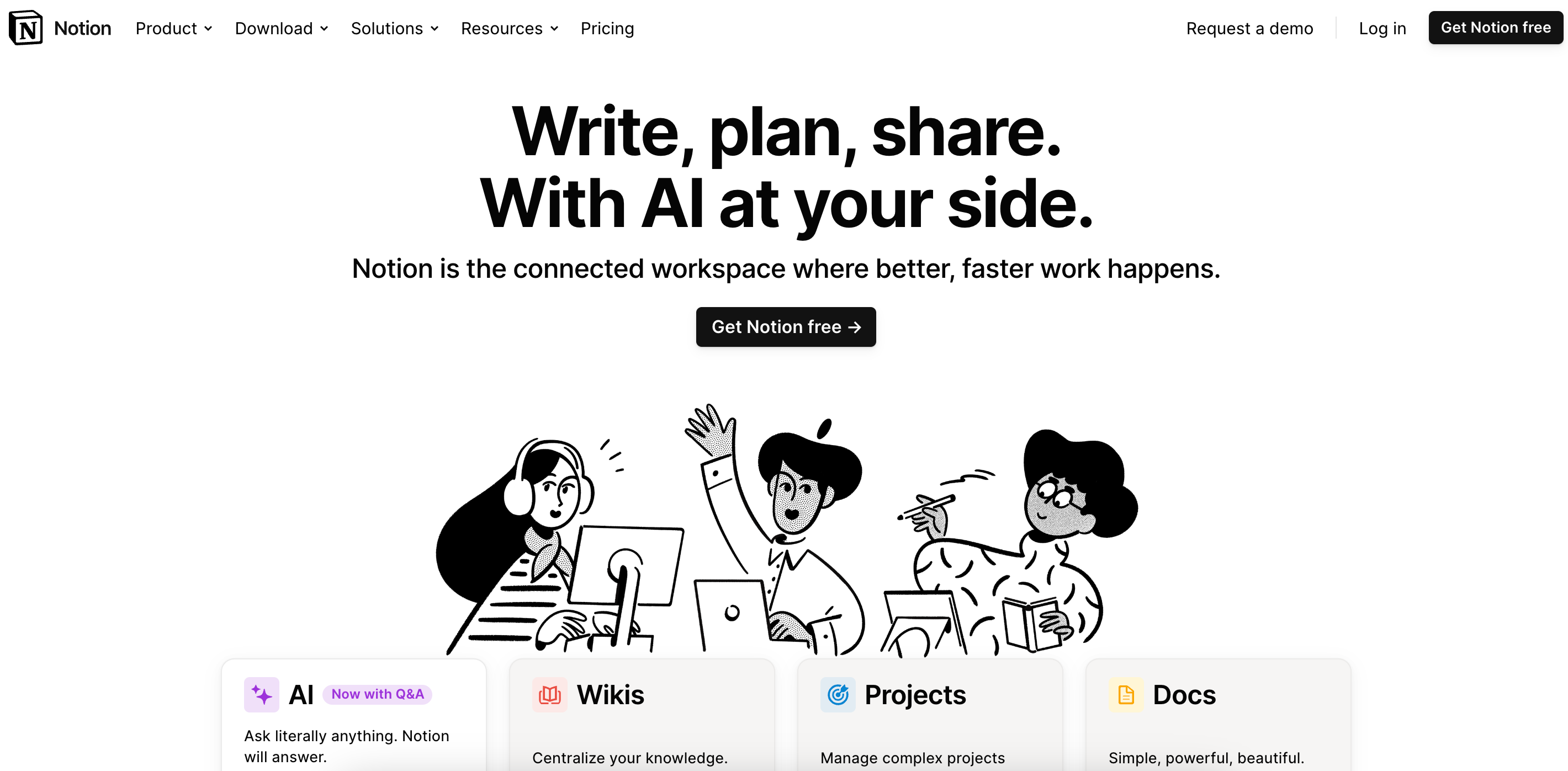
These AI capabilities help by reducing manual effort in data entry and content organization. The impact of Notion’s AI integration is evident in its growing popularity among professionals and teams.
It simplifies workflow management, enabling users to customize their workspace to fit their specific needs. This, combined with AI efficiency, leads to improved focus and task execution.
User satisfaction with Notion is high, with many praising its all-in-one platform approach. A notable mention is its use in managing complex projects, where its AI features aid in prioritizing tasks and streamlining processes.
This seamless blend of productivity tools with intelligent automation makes Notion a go-to solution for those seeking an organized and efficient way to manage their work.
The landscape of AI tools is rapidly evolving, heralding a future where no-code AI becomes integral to business strategy across industries. These tools simplify complex AI implementations, making them accessible to non-technical users.
Future developments in no-code AI promise even greater user-friendliness and more advanced capabilities like enhanced natural language processing, predictive analytics, and broader integrations.
The possibilities are vast, ranging from automating routine tasks to unlocking innovative data insights and fundamentally changing how businesses operate and compete.
The continuous advancement of these tools will further democratize AI, making cutting-edge technology a standard asset in every business toolkit.
No-code AI tools are instrumental in facilitating digital transformation and breaking down the barriers to advanced technology adoption.
They empower businesses to harness the power of AI without the need for extensive programming knowledge, making processes like data analysis, customer engagement, and content creation more efficient and effective.
Choosing the right no-code AI tool, aligned with specific business needs, can dramatically enhance operational efficiency, drive innovation, and foster more intelligent, data-driven decision-making processes in today’s fast-paced digital world.